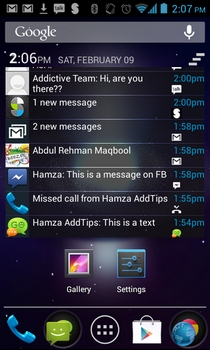

Stacks have another trick up their sleeve: Smart Rotate. You can add quite a few widgets to a stack, though at some point, it will become challenging to find the one you want. iOS 14 combines the two and, once you leave jiggle mode, lets you swipe up and down on the widget to move between them. To do this, when you’re in jiggle mode, simply drag one widget onto another of the same size, much as you’d add an app to a folder. That’s true, and although nothing prevents you from having a bunch of Home screens devoted to nothing but widgets, you can also combine widgets into a stack.

You might be thinking that widgets are cool but that they take up a lot of space. Plus, apps can provide multiple widgets, so the Spark email and calendar app, for instance, has nine different widgets that show recent email messages and upcoming events in a variety of layouts. Widgets come in up to three sizes: a small square that occupies the space of four app icons, a horizontal rectangle that’s the size of two rows of apps, and a large square that takes up the space of four rows of apps. It’s safest to add widgets to an empty or nearly empty Home screen and, once you’ve gotten them configured as you like, move them to your final destination Home screen. One tip: Other apps and widgets will move out of the way, which can be disconcerting, and it can result in your apps being shuffled around weirdly in the end. After you position it as you want, tap Done in the upper-right corner (Face ID) or press the Home button (Touch ID).Remember that you can instead swipe with another finger to move the screen underneath the widget while you’re dragging. Back on the Home screen, drag the widget to the desired location, which may involve dragging it to another Home screen or the Today view.Once you’ve found the widget size and content you want, tap Add Widget.Tap any widget to see its options swipe left and right to see different sizes or types of information.In the Widget pop-up, scroll or search to find apps that offer widgets.Tap the + button at the top of the screen.Touch and hold any empty spot on a Home screen until the icons start jiggling.To add a widget to a Home screen or to Today view (which, for the purposes of widget management, is just another Home screen), follow these steps: Older widgets remain accessible at the bottom of Today view, and you can add and remove them by tapping Edit at the very bottom of the Today view screen. Widgets do need to be updated for iOS 14 to live on the Home screen and appear at the top of the Today view list. In fact, you could think of iOS 14’s Home screen widgets as having escaped Today view-which is still there and provides access to a scrolling list of widgets that you choose.
#Widget sms mac android
iPhone users familiar with Google’s Android smartphone operating system have long clamored for widgets because they provide quick information at a glance, without having to launch an app or swipe right on the Home screen for Today view.

A significant new feature in iOS 14 is Home screen widgets, information-rich tiles that share space on a Home screen with app icons.


 0 kommentar(er)
0 kommentar(er)
